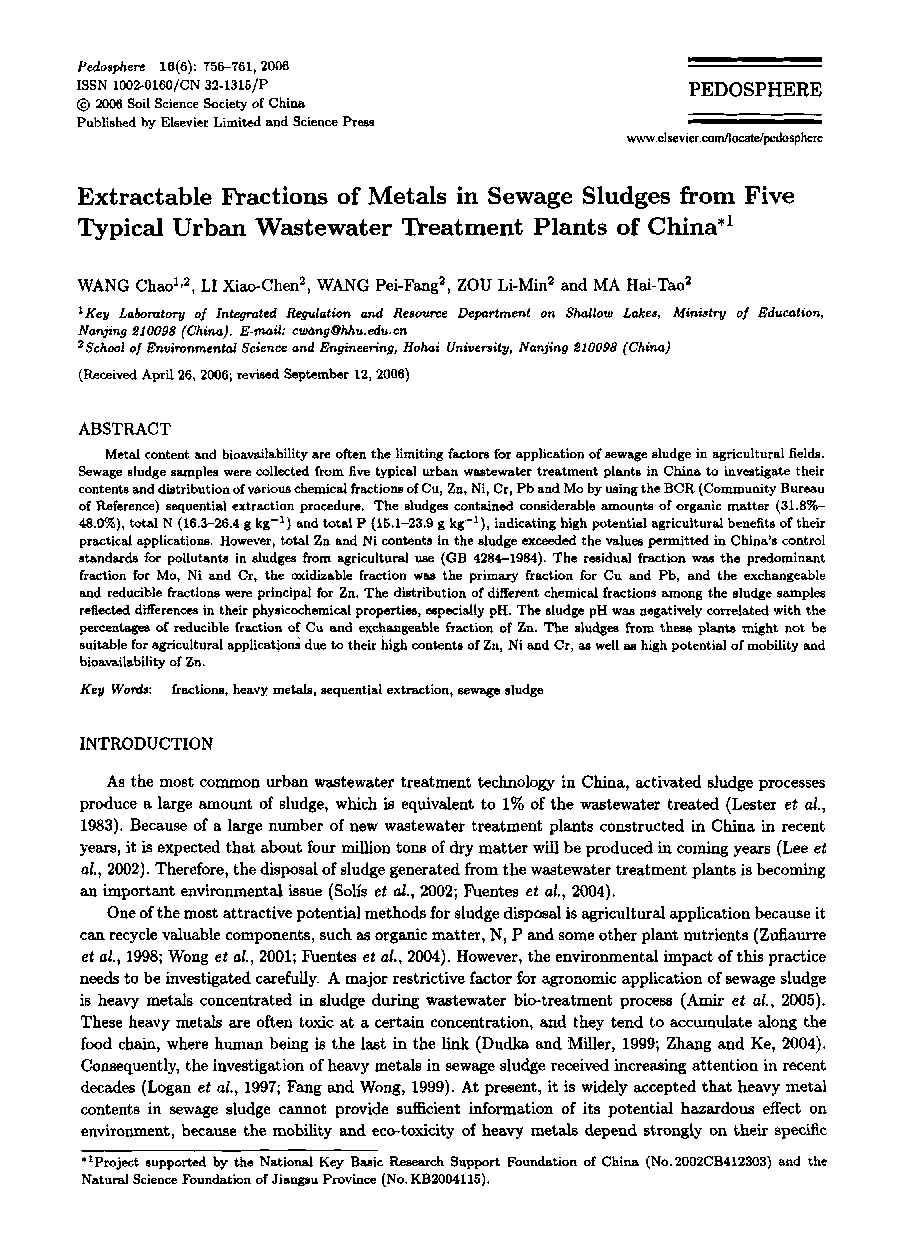| Article ID | Journal | Published Year | Pages | File Type |
|---|---|---|---|---|
| 4582226 | Pedosphere | 2006 | 6 Pages |
ABSTRACTMetal content and bioavailability are often the limiting factors for application of sewage sludge in agricultural fields. Sewage sludge samples were collected from five typical urban wastewater treatment plants in China to investigate their contents and distribution of various chemical fractions of Cu, Zn, Ni, Cr, Pb and Mo by using the BCR (Community Bureau of Reference) sequential extraction procedure. The sludges contained considerable amounts of organic matter (31.8%-48.0%), total N (16.3–26.4 g kg−1) and total P (15.1–23.9 g kg−1), indicating high potential agricultural benefits of their practical applications. However, total Zn and Ni contents in the sludge exceeded the values permitted in China's control standards for pollutants in sludges from agricultural use (GB 4284–1984). The residual fraction was the predominant fraction for Mo, Ni and Cr, the oxidizable fraction was the primary fraction for Cu and Pb, and the exchangeable and reducible fractions were principal for Zn. The distribution of different chemical fractions among the sludge samples reflected differences in their physicochemical properties, especially pH. The sludge pH was negatively correlated with the percentages of reducible fraction of Cu and exchangeable fraction of Zn. The sludges from these plants might not be suitable for agricultural applications due to their high contents of Zn, Ni and Cr, as well as high potential of mobility and bioavailability of Zn.
